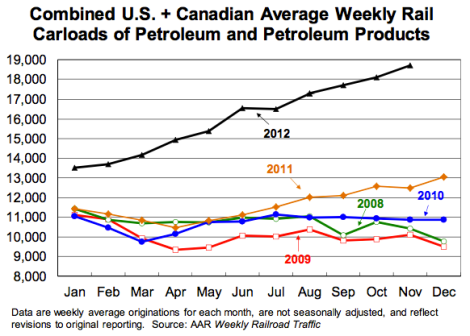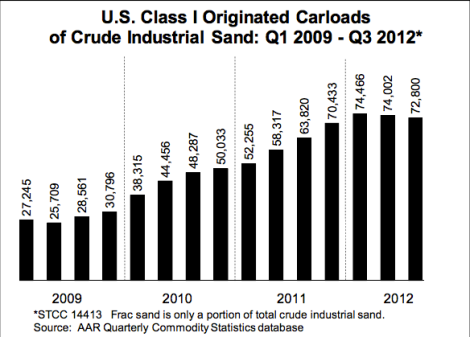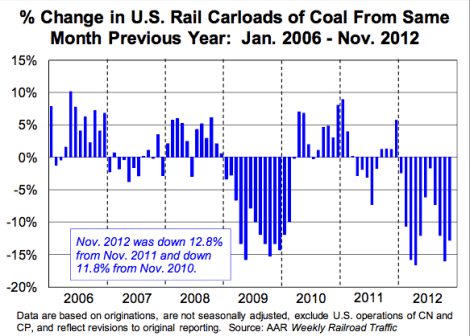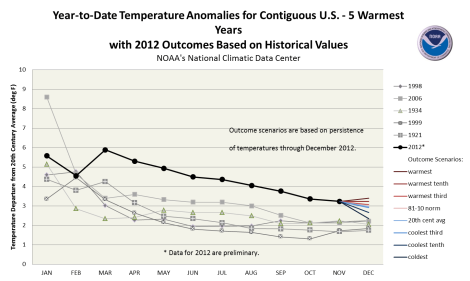You can learn the story of the fracking boom by looking at one set of data: railroad shipments. Because, you know, it’s 1890.
Our Lisa Hymas explained how and why oil companies are increasingly relying on rail shipments; in short, no new pipelines plus a huge spike in extraction. But how big is that spike? Here is how the Association of American Railroads depicts it [PDF].
Or, if you prefer, here’s the percentage change in carloads of petroleum, year over year.
And in raw number:
The main reason for this boom is fracked oil from the northern Plains states (something we’ve also discussed previously). Fracking requires lots of sand, used to hold open the fissures through which gas and oil make their way to the surface. So as fracked oil has increased, so have rail shipments of sand.
Fracking natural gas has also meant significant declines in coal use. Since you can’t ship coal through a pipeline (very quickly), rail carloads are a good indicator of the strength of coal. Doing so, we see that 2012 has been a particularly bad year for coal.
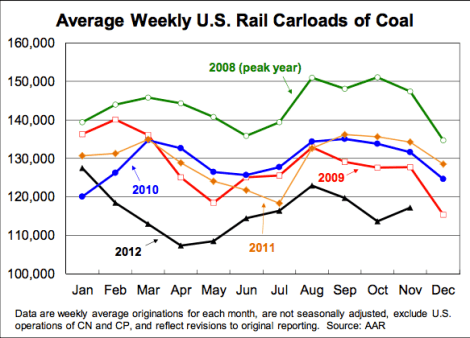
Or, more starkly:
There you have it. The fracking industry, as told by railroad data.
Incidentally, I’ll note that that first graph, showing how much more oil was shipped in 2012 brought to mind this one we shared yesterday, showing how much warmer 2012 has been than any year prior.
You’d be forgiven for thinking that the two graphs were somehow related.
